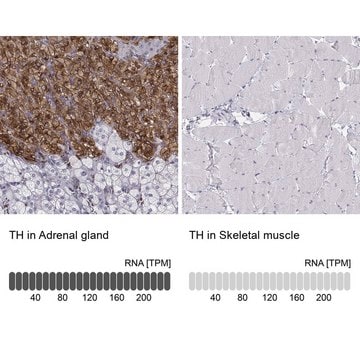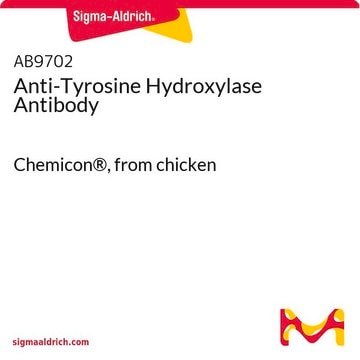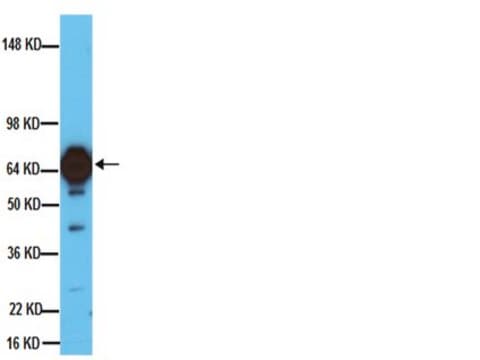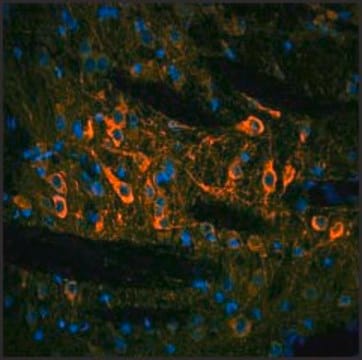T2928
Monoclonal Anti-Tyrosine Hydroxylase antibody produced in mouse
clone TH-16, ascites fluid
Synonym(s):
Anti-DYT14, Anti-DYT5b, Anti-TYH
About This Item
Recommended Products
biological source
mouse
Quality Level
conjugate
unconjugated
antibody form
ascites fluid
antibody product type
primary antibodies
clone
TH-16, monoclonal
contains
15 mM sodium azide
species reactivity
rat, sheep, human, monkey, bovine, rabbit, guinea pig
technique(s)
immunohistochemistry: suitable
immunoprecipitation (IP): suitable using native or SDS-denatured TH.
microarray: suitable
western blot: 1:8,000 using extracts of cultured rat adrenal pheochromocytoma (PC12) cells.
isotype
IgG1
UniProt accession no.
shipped in
dry ice
storage temp.
−20°C
target post-translational modification
unmodified
General description
Specificity
Immunogen
Application
- western blotting
- immunofluorescence labelling
- immunohistochemical staining
- enzyme linked immunosorbent assay (ELISA)
- dot blot
- immunoprecipitation
- immunocytochemistry
Biochem/physiol Actions
Disclaimer
Not finding the right product?
Try our Product Selector Tool.
recommended
Storage Class
10 - Combustible liquids
wgk_germany
WGK 3
flash_point_f
Not applicable
flash_point_c
Not applicable
Certificates of Analysis (COA)
Search for Certificates of Analysis (COA) by entering the products Lot/Batch Number. Lot and Batch Numbers can be found on a product’s label following the words ‘Lot’ or ‘Batch’.
Already Own This Product?
Find documentation for the products that you have recently purchased in the Document Library.
Customers Also Viewed
Our team of scientists has experience in all areas of research including Life Science, Material Science, Chemical Synthesis, Chromatography, Analytical and many others.
Contact Technical Service















